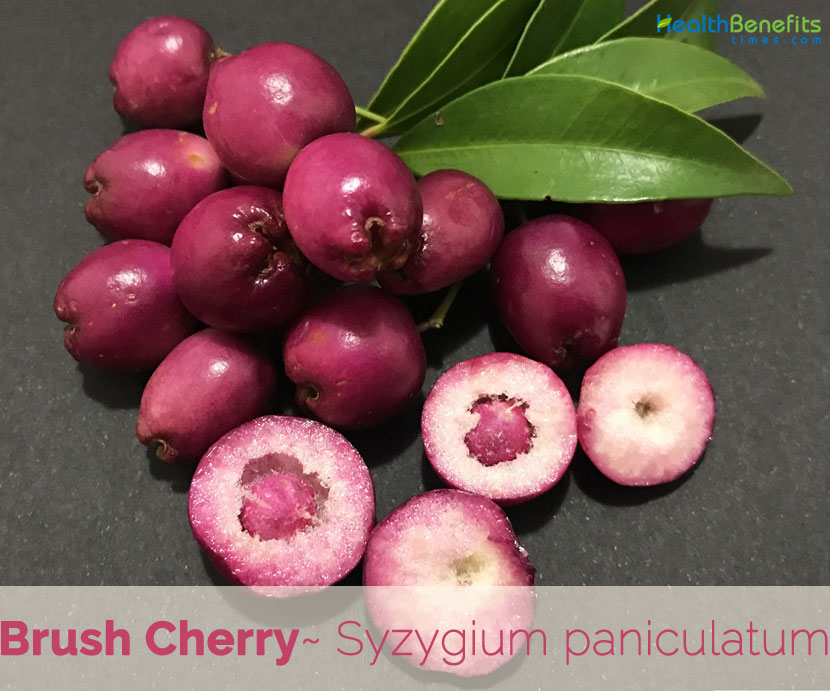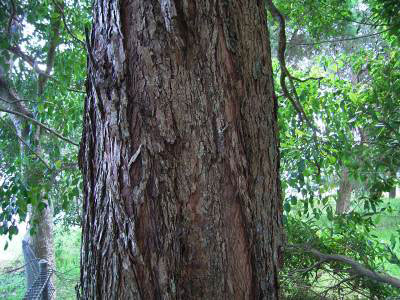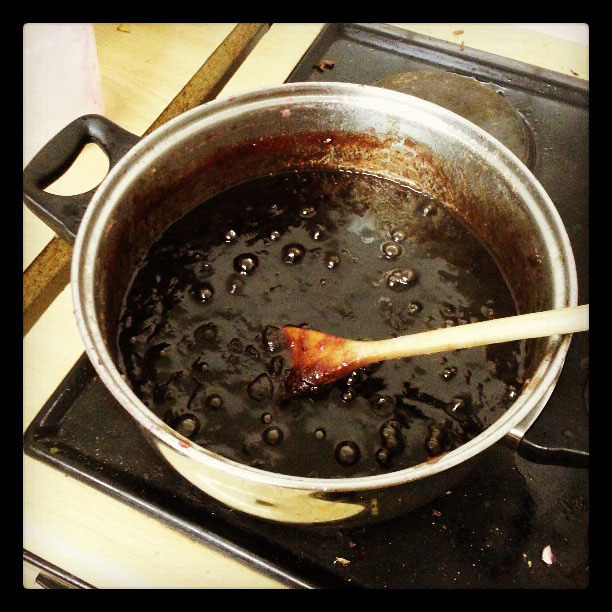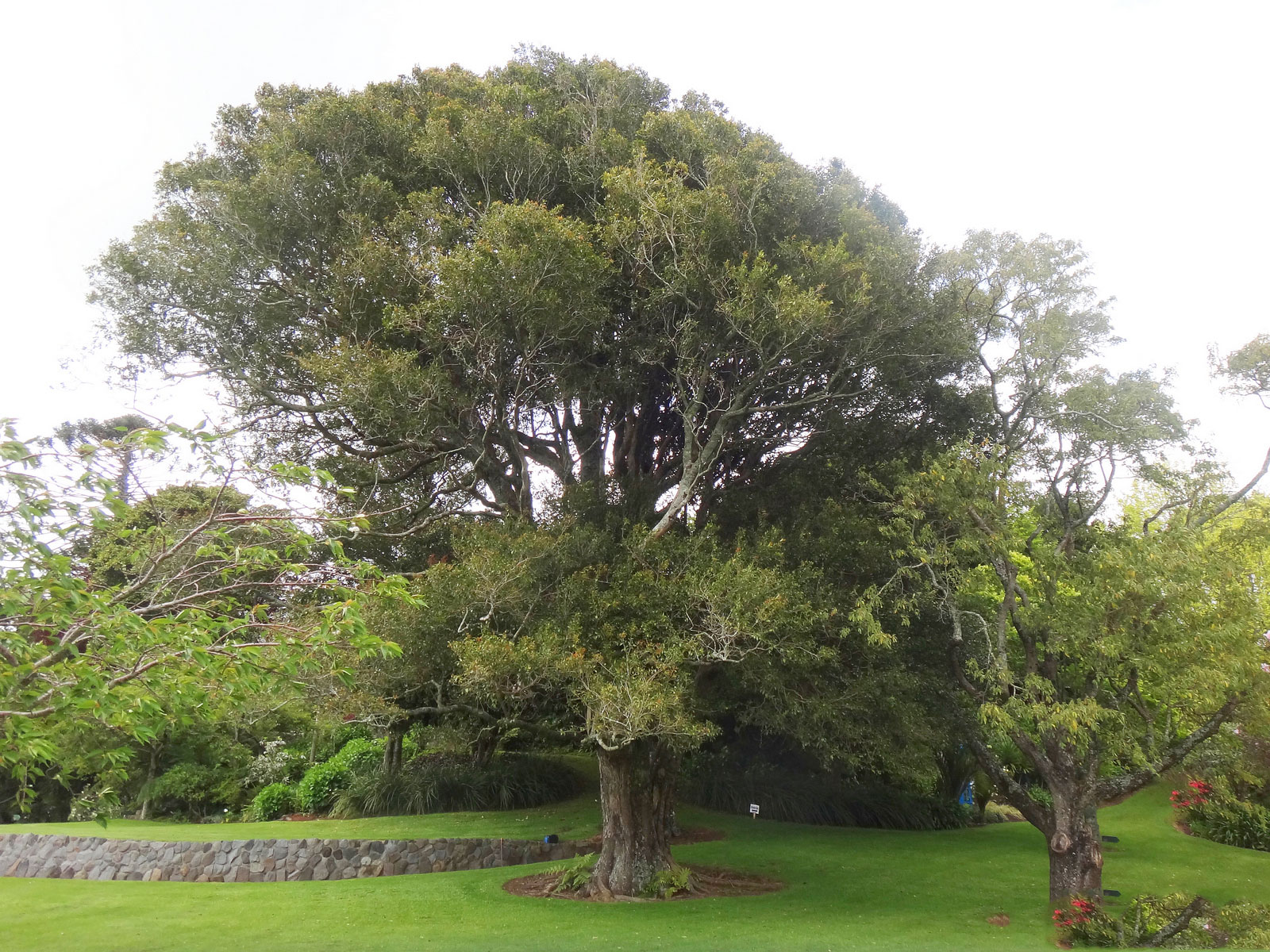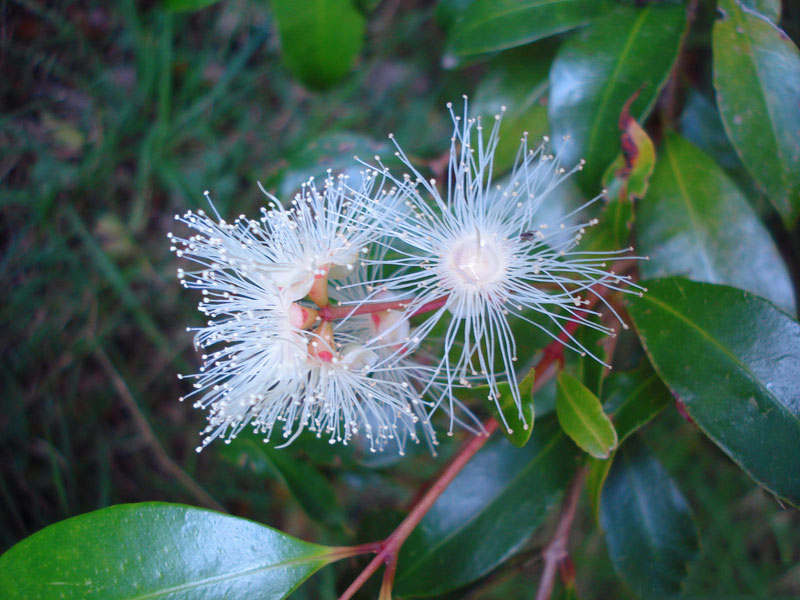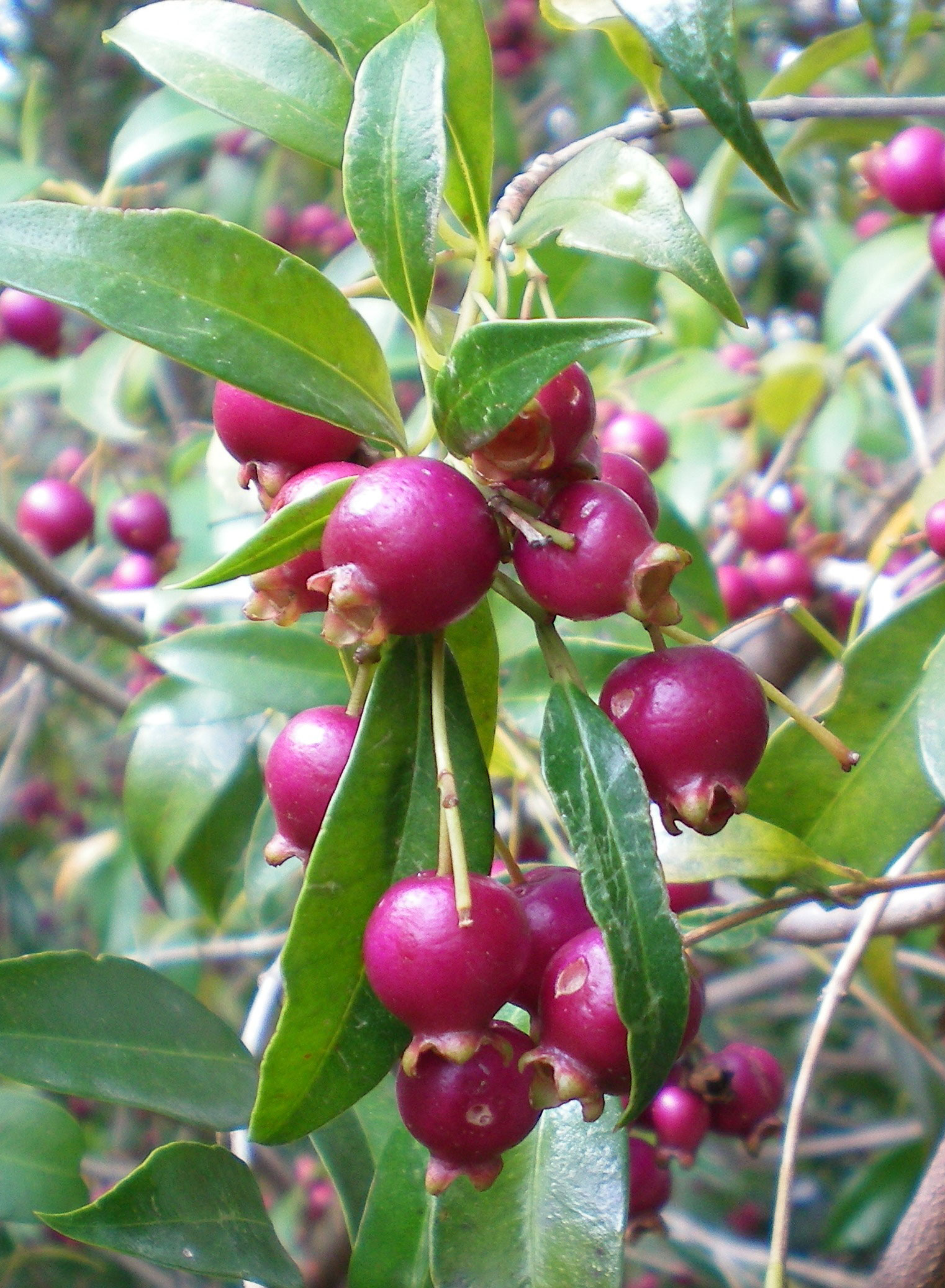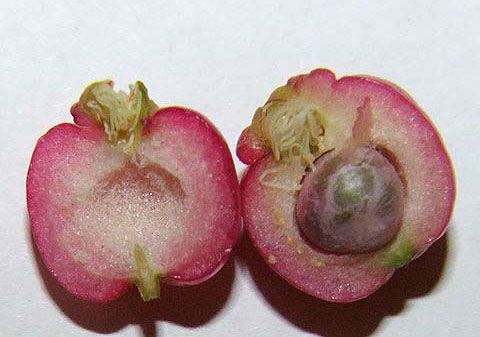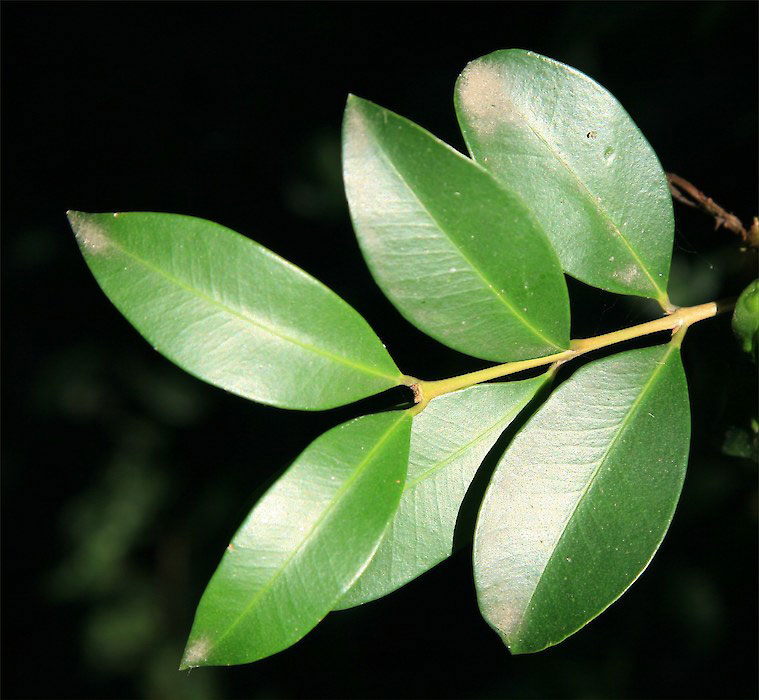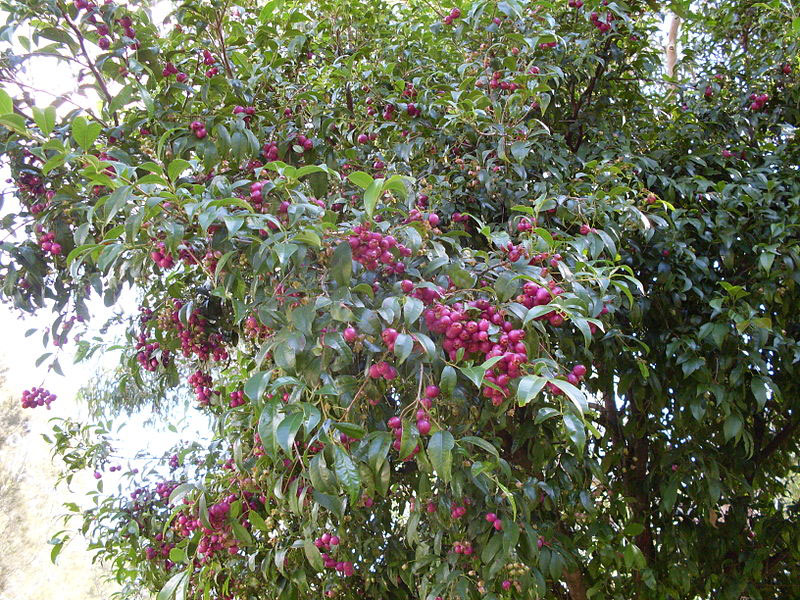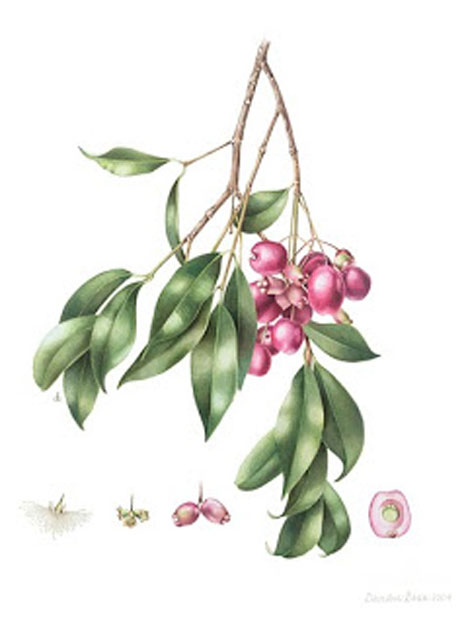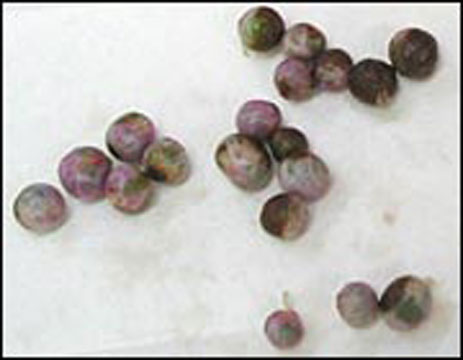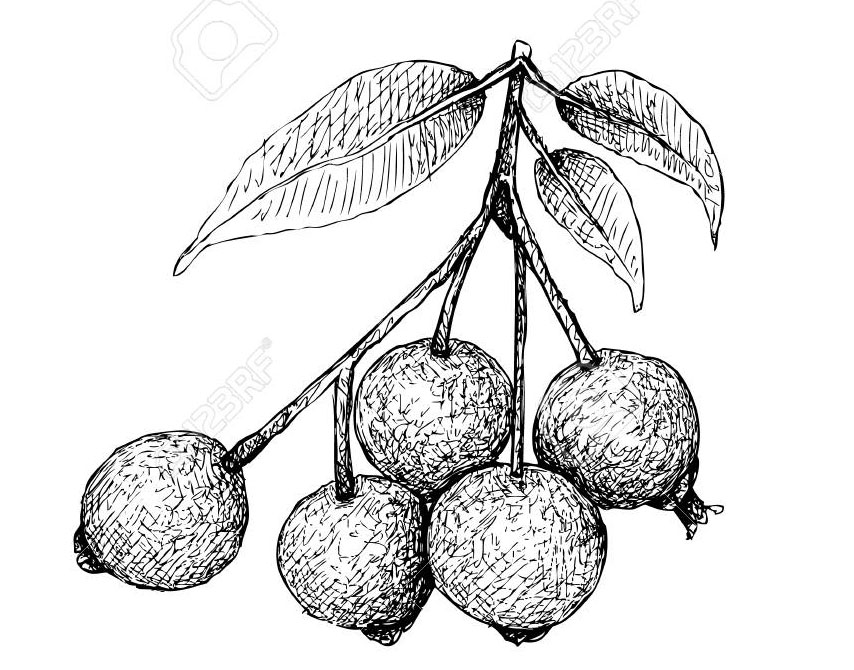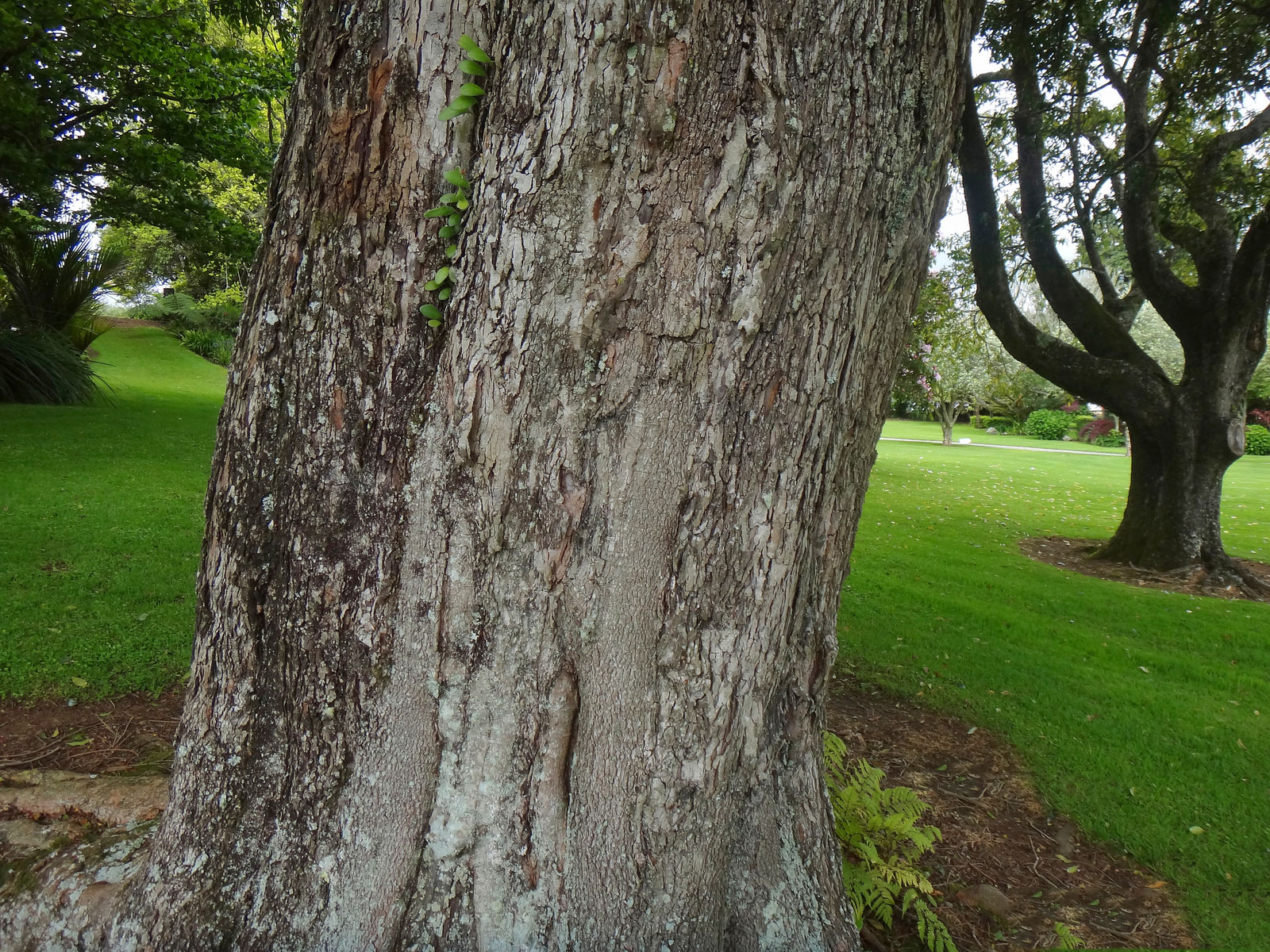| Brush Cherry Quick Facts | |
|---|---|
| Name: | Brush Cherry |
| Scientific Name: | Syzygium paniculatum |
| Origin | New South Wales, Australia |
| Colors | Initially green turning to magenta or can be white, pink or purple |
| Shapes | Ovoid berry, 1.3–1.5 cm long, 0.8–1 cm wide, fleshy |
| Taste | Slightly acidulous taste |
| Name | Brush Cherry |
|---|---|
| Scientific Name | Syzygium paniculatum |
| Native | New South Wales, Australia, occurring along a narrow, linear, coastal strip in five separate geographical areas: Jervis Bay, Coalcliff, Botany Bay, Central Coast and Seal Rocks |
| Common Names | Australian brush-cherry, brush cherry, Australian water-pear, magenta cherry, magenta lilly pilly, scrub cherry, scrub cherry, creek lilly-pilly, creek satinash, watergum |
| Name in Other Languages | Afrikaans: Australiese waterbessie Chinese: Ao zhou pu tao, Ao zhou yuan zhui hua fan ying ta , Yuan zhui hua fan ying tao English: Australian brush cherry, Brush cherry, Magenta lillypilly, magenta cherry, Australian water pear French: Cerisier d’Australie, myrte d’Australie German: Kirschmyrte Hebrew: סיזיגיון מכבדי Malayalam: Saisījiyaṁ panikulēṟṟaṁ (സൈസീജിയം പനികുലേറ്റം) Portuguese: Jambinho-roxo, jambinho, jambinho-rosa, jambo-da-Austrália Russian: Sizigium metel’chatyj (Сизигиум метельчатый) Spanish: Cereza magenta, lilly pilly magenta Swedish: Vippmyrten |
| Plant Growth Habit | Slow-growing evergreen shrub or small tree |
| Growing Climates | Rain forests and sandy soils by the sea, subtropical and littoral rainforest on sandy soils or stabilized dunes near the sea, Self establishes freely in shade, including native forest, parks, gardens |
| Soil | Alluvial, lateritic, sandy alluvia, marl and olitic limestone. Some of them tolerate saline soil and are found on deep, rich, well-drained soils |
| Plant Size | About 3 – 7 meters tall, but exceptional specimens up to 20 metres are found |
| Leaf | Simple, opposite, from elliptic to obovate with sharp apex, 3-10 cm long and 1,5-3 cm broad, of glossy dark green color on the upper page, paler below; the young leaves are red-bronze colored |
| Flowering season | November and February |
| Flower | It has cymose or panicle terminal inflorescences with flowers with cream white petals, about 5 mm long and several white stamina, 8-15 mm long, which are the most conspicuous part of the flower |
| Fruit Shape & Size | Ovoid berry, 1.3–1.5 cm long, 0.8–1 cm wide, fleshy |
| Fruit Color | Initially green turning to magenta or can be white, pink or purple |
| Seed | Only one seed |
| Propagation | By seed, softwood cutting, semi hardwood cutting |
| Taste | Slightly acidulous taste |
| Season | March to June |
Plant Description
Brush Cherry is a slow-growing evergreen shrub or small tree with a dense, pyramidal crown. A broad dense bushy rainforest tree, it grows to a height of 15 m (49 ft.) with a trunk diameter up to 35 cm (14 in). The plant is found growing in rain forests, sandy soils by the sea, subtropical, littoral rainforest on sandy soils, stabilized dunes near the sea, self establishes freely in shade, including native forest, parks and gardens. The plant prefers alluvial, lateritic, sandy alluvia, marl and olitic limestone. Some of them tolerate saline soil and are found on deep, rich, well-drained soils.
Leaves
The leaves are 3-10 cm long and 1.5-3 cm broad, opposite, simple and slightly obovate, tapering at the leaf base. They are dark glossy green color on the upper page, and paler below. The young leaves are red-bronze colored. Petiole is about 3–5 mm long.
| Leaf arrangement | opposite/subopposite |
| Leaf type | simple |
| Leaf Margin | Entire |
| Leaf shape | elliptic (oval) |
| Leaf Venation | none, or difficult to see |
| Leaf type and persistence | evergreen |
| Leaf blade length | less than 2 inches |
| Leaf color | purple or red |
| Fall color | no fall color change |
| Fall characteristic | not showy |
Flower
It has cymose or panicle terminal inflorescences with flowers with cream white petals, about 5 mm long and several white stamina about 8-15 mm long, which are the most conspicuous part of the flower. Calyx is green with lobes tipped red but later all red; tube narrowly obconic about 5 mm long. Lobes are oblong, 3 mm long and 2.7 mm wide. Petals are white, round, 4 mm long and wide. Stamens are white, about 6–8 mm long. Flowering normally takes place from November and February.
| Flower color | White |
| Flower Characteristics | Summer flowering |
Fruits
Fertile flowers are followed by fleshy globose or ovoid berry, 1.3–1.5 cm long, and 0.8–1 cm wide. Fruits are initially green turning to magenta or can be white, pink or purple with a slightly acidulous taste, containing one seed only, usually polyembryonic. It reproduces by branch cutting of the year and by seed, which must be planted as soon as possible, as it has a short lasting germinable capacity.
It also stated that “The red juice of the fruit of this tree is similar in its properties to that of red grapes. It contains free tartaric acid, cream of tartar, sugar, and red coloring matter very sensitive to the action of acids and alkalies. By fermentation it yields wine possessing a bouquet. The coloring matter, which is soluble in alcohol and ether-alcohol, but not in pure ether, is precipitated by lead-acetate, decolorized by reducing agents, and recovers its red color on exposure to the air, just like litmus and the red color of wine. The edible fruit is occasionally collected from the wild, though it is not widely appreciated. The tree is commonly grown as a hedge and ornamental. The plant is endangered, with a serious risk of disappearing from the wild within one or two decades if current land use continues.
| Fruit Shape | Round |
| Fruit Length | Less than 0.5 inch |
| Fruit Cover | Fleshy |
| Fruit Color | Red, Black |
| Fruit Characteristics | suited for human consumption; attracts birds |
Culinary uses
- Crisp and very juicy, the aromatic rose-purple fruits are often eaten to quench the thirst.
- The pleasantly sour fruit are also eaten fresh or cooked.
- The fruit can be used to make jams and jellies
Other Facts
- Plants are used for hedging in frost-free areas of California.
- They are widely used for hedging and to provide shelter from the wind in frost-free areas of California and Florida.
- Outside Australia, brush cherry is used as a subject for bonsai.
- This species has been adopted by Coffs Harbor City Council as the City’s floral symbol.
References:
https://www.itis.gov/servlet/SingleRpt/SingleRpt?search_topic=TSN&search_value=506169#null
https://pfaf.org/user/Plant.aspx?LatinName=Syzygium+paniculatum
https://www.cabi.org/isc/datasheet/52455
https://plants.usda.gov/core/profile?symbol=SYPA7
https://www.wikidata.org/wiki/Q159398
https://gd.eppo.int/taxon/SYZPA
http://www.theplantlist.org/tpl1.1/record/kew-200058
https://en.wikipedia.org/wiki/Syzygium_paniculatum
http://tropical.theferns.info/viewtropical.php?id=Syzygium+paniculatum
http://www.plantsoftheworldonline.org/taxon/urn:lsid:ipni.org:names:602052-1
https://edis.ifas.ufl.edu/fp567
https://bie.ala.org.au/species/http://id.biodiversity.org.au/node/apni/2886832


